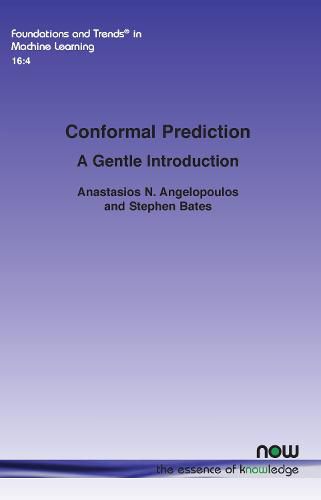Readings Newsletter
Become a Readings Member to make your shopping experience even easier.
Sign in or sign up for free!
You’re not far away from qualifying for FREE standard shipping within Australia
You’ve qualified for FREE standard shipping within Australia
The cart is loading…






This title is printed to order. This book may have been self-published. If so, we cannot guarantee the quality of the content. In the main most books will have gone through the editing process however some may not. We therefore suggest that you be aware of this before ordering this book. If in doubt check either the author or publisher’s details as we are unable to accept any returns unless they are faulty. Please contact us if you have any questions.
Black-box machine learning models are now routinely used in high-risk settings, like medical diagnostics, which demand uncertainty quantification to avoid consequential model failures. Conformal prediction is a user-friendly paradigm for creating statistically rigorous uncertainty sets/intervals for the predictions of such models. One can use conformal prediction with any pre-trained model, such as a neural network, to produce sets that are guaranteed to contain the ground truth with a user-specified probability, such as 90%. It is easy-to-understand, easy-to-use, and in general, applies naturally to problems arising in the fields of computer vision, natural language processing, deep reinforcement learning, amongst others.
In this hands-on introduction the authors provide the reader with a working understanding of conformal prediction and related distribution-free uncertainty quantification techniques. They lead the reader through practical theory and examples of conformal prediction and describe its extensions to complex machine learning tasks involving structured outputs, distribution shift, time-series, outliers, models that abstain, and more. Throughout, there are many explanatory illustrations, examples, and code samples in Python. With each code sample comes a Jupyter notebook implementing the method on a real-data example.
This hands-on tutorial, full of practical and accessible examples, is essential reading for all students, practitioners and researchers working on all types of systems deploying machine learning techniques.
$9.00 standard shipping within Australia
FREE standard shipping within Australia for orders over $100.00
Express & International shipping calculated at checkout
Stock availability can be subject to change without notice. We recommend calling the shop or contacting our online team to check availability of low stock items. Please see our Shopping Online page for more details.
This title is printed to order. This book may have been self-published. If so, we cannot guarantee the quality of the content. In the main most books will have gone through the editing process however some may not. We therefore suggest that you be aware of this before ordering this book. If in doubt check either the author or publisher’s details as we are unable to accept any returns unless they are faulty. Please contact us if you have any questions.
Black-box machine learning models are now routinely used in high-risk settings, like medical diagnostics, which demand uncertainty quantification to avoid consequential model failures. Conformal prediction is a user-friendly paradigm for creating statistically rigorous uncertainty sets/intervals for the predictions of such models. One can use conformal prediction with any pre-trained model, such as a neural network, to produce sets that are guaranteed to contain the ground truth with a user-specified probability, such as 90%. It is easy-to-understand, easy-to-use, and in general, applies naturally to problems arising in the fields of computer vision, natural language processing, deep reinforcement learning, amongst others.
In this hands-on introduction the authors provide the reader with a working understanding of conformal prediction and related distribution-free uncertainty quantification techniques. They lead the reader through practical theory and examples of conformal prediction and describe its extensions to complex machine learning tasks involving structured outputs, distribution shift, time-series, outliers, models that abstain, and more. Throughout, there are many explanatory illustrations, examples, and code samples in Python. With each code sample comes a Jupyter notebook implementing the method on a real-data example.
This hands-on tutorial, full of practical and accessible examples, is essential reading for all students, practitioners and researchers working on all types of systems deploying machine learning techniques.